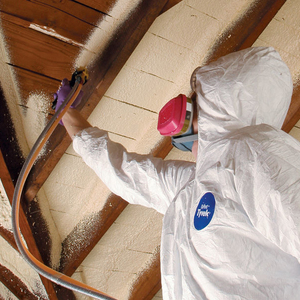Best way to stain and varnish hardwood floors?
Hi Y’all,
I’m in tthe process of refinishing red oak, hardwood floors in my house.
I’ve already sanded and stripped the floors of their original finish. All prep work is done…I simply need to lay down the stain and then lay down the polyurethane the following day. My question is..what is the best way to accomplish these 2 tasks…and should I first lay down a sanding sealer and/or use thinnned down shellac to keep the floor from blotching?
A Sherwin Williams rep told me to hand stain using a paint brush and ragging it in. He also sold me a lambs wool applicator ( approx 10 inches long) that he said I should use when applying the poly. The applicator screws to a pole…I would pour the poly in a flat pan, dip in the applicator, and then lightly brush it on. Not sure if perhaps a sponge type roller would work better?
I am using Golden Oak oil stain by Minwax and also applying gloss finish, fast drying floor poly by Minwax. Good choice or not?
Need advice. Thanks
Davo



















Replies
Davo
Here's what I do and have done for 30 yrs, tho not a professional floor guy-just a dumb carpenter.
FLOOR CLEAN!
Don't walk on it during / before or after sanding in shoes with imprints. I go with socks (well, one pair as I don't want to sacrifice the whole drawer).
I have a 4 x 7 or 9" flat pad that has both very small short bristles as well as a foam pad behind. I apply the stain with that-rubbing it in then walking the whole floor front to back with the boards to even it out. On occasion I will rag up the excess if necessary or to lighten the coat.
Once I let it dry (completely), I apply finish with a sort of foam pad that slides onto the bar of the heavy pole-made specifically for that purpose. I can pour a line of finish then follow that up with the applicator-rubbing back and forth to evenly apply-then the same driveway coating technique to even it out-dragging the applicator evenly with the grain. Repeating and you want to keep a wet edge-harder with the water base coatings.
Never used a roller as this will leave small bubbles and an edge line (from what I've seen of diy applications using this.
Calvin,
Thank you . I definately will not use a roller for the finish. BTW, have you ever used the floor poly manufactured by Minwax? It is supposed to be quick drying. It is oil based, not water. I figure using the oil will give me a harder finsh than would the water...plus the water can raise the grain. Is there a better brand name that you would recommend?
Did you ever use a "wash coat " of shellac or sanding sealer before applying your stain? Not sure if i need to do this or not.
Thanks.
Davo
Davo
Never have used a wash coat for floors, have never seen the need on oak, ash, fir, or maple-but trying out with sacrificials might be wise for the ultimate in finished look.
Here's a link to Padco-the floor tools section is where you should go. They might have a video of the operation
http://www.padco.com/
I think Valspar might also offer a floor coating and they too might have instructional tips.
I use almost exclusively and have had good luck with Fabulon-Crystal I believe...............been a couple yrs.
Never used minwax floor coating-but do like their water based.
Yes, grain raise is a probable, less so with the harder woods-the stain seems to keep it from fuzzing up too much. However, a light stick drywall sander and 180 seems to work for me to knock it down w/o much effort. Or, screen it b/4 and between coats. It helps because it blends edger to floor sander areas, highlights any imperfections and does a good job of smoothing between coats.
There are many other coatings but Fabulon is readily available to me in this area.
I can give you my recommendation from my limited experience. I am also NOT a professional floor guy, and have only done 5 wood floors, only one of which had any staining. The rest were just finished 'natural' with polyurethane. Sorry for the long post, but when I asked questions like this before my first floor I got a lot of one or two line answers that weren't specific enough for a rookie on his own. None of the steps to finishing a floor is complicated, but attention to detail and patience are very important.
The minwax should work fine, though I have always used Varathane Diamond Floor finish (oil based) due to recommendations from the local pros that gave me advice. There are some really good water based finishes out now, but they won't give you that warm glow that an oil based finish will.
For staining (based on my vast experience with one floor), make sure you have things well sanded. For the floor I stained, we used a drum sander through 100 grit to get things nice and level and pretty smooth. Then we used a hand sander (I have a Ridgid 6 inch random orbit sander) with 150 grit, then 220 grit, frequently replacing the sandpaper. The pros use a big machine with the sanding screens, but since this house was 55 miles from a rental shop, we made due with the hand sander. For the hand sanders, I made sure my clothes were very clean, wore clean cotton socks with no shoes and had cotton gloves on my hands just to make sure that I wasn't getting skin oils or anything that would affect the stain. Then we used a shop vac on the whole floor to get the dust up, then a tack rag to get every speck of dust up. Be sure to wipe down the walls, windowsills, etc before tack ragging the floor or you could get some dust in your finish. I didn't use any sealers or anything before the stain because red oak has always taken a stain pretty evenly for me. If I was doing this on a softer wood, I might have used a sanding sealer or conditioner of some type. I applied the stain with a brush and had a rag to wipe, rub it in. After the stain had dried COMPLETELY (24 hours in my case) We took clean, lint free rags over the whole floor to make sure there wan't any residue to mess with our finish.
For the oil based Polyurethane, the standard recommendation is to use a lambs wool applicator. But if you use one of those, be VERY meticulous about getting all the fibers and lint out of the applicator. I made that mistake on my first floor, just ran some blue tape over it a few times and started applying. I had to re-sand that part of the floor due to all the pieces of wool that came off the applicator. I have actually started using a paint pad applicator (short bristles on a foam backed pad) and like that much better. No lint, and I can see how much I am applying much easier. When applying with an 8 inch applicator, I overlap about 5 on each stroke and angle the applicator a little toward the unfinished area so that any puddle or thick spots will run out toward the next pass instead of making streaks. One caution: do not push hard on the applicator to get all the urethane out of the sponge backing or you could get some bubbles. I use a new pad for each coat, so I don't have to do any cleaning, just throw the used applicator away. The key to a good finish is very slow steady strokes with even pressure. sometimes it is painfully slow, but relax and take your time. Move too fast and you will have a streaky finish. Have a plan so that you can work your way out of a room and ALWAYS keep a wet edge. One room I did had 4 closets, a stairway and a hallway, so I started in the biggest closet and finished to the door of that closet. Then I did another 2 closets and came back and came a little bit our of the door of the first closet so that the edge didn't get gummy before I got back to it. I basically had to work on several different areas at the same time to keep all the edges wet until I could get into the main room to work towar the stairs... That room was hard, because of its strange shape. Again my rule is NO shoes on the floor after the last sanding...
The first coat usually takes FOREVER to dry. In my experience 18-24 hours. other coats are dry in about 12-15 hours (65 degrees, 40% humidity using Varathane diamond finish). Don't open a window or run a fan on it as that may stir up dust. I sand between each coat VERY lightly with 220 grit on the hand sander. After sanding I shopvac the floor, wait an hour for any dust to settle, then tack rag the floor with cheesecloth dampened with linseed oil. (all of this is done in my socks, no shoes). once the floor is dust free, I apply the second coat. It is much more difficult to see where you have been after the first coat, so be sure that you have a system and adequate light so that you can look at the sheen and see any streaks or patches that you missed. Same system after the second and following coats (let dry, sand, let dust settle, tack rag, then finish again. The first two coats will get the floor sealed and the third coat will really start to build a finish. For me the MINIMUM is 4 coats, but I usually do 5 coats and see how it looks. One of my floors was streaky after the 5th coat ( I got in a hury with the applicator using a satin finish) so I did a sixth coat wnd was very patient during application.
Plan on about 5 days for finishing. You definitely don't want to be in a hurry. If you can stay somewhere else while you are doing this it will be better, as the odor can be very unpleasant. Stir the can each time you refill your tray (especially with satin finishes) but never shake a polyurethane, or you could get bubbles.
I hop ther are some helpful ideas in there... Again sorry for the long post!